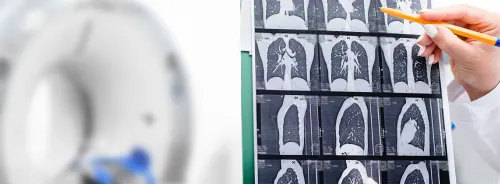Hypersensitivity reactions to iodinated contrast media are type B adverse reactions and remain inherently unpredictable. Over time, proliferating risk lists have offered little practical clarity for imaging teams. A focused appraisal of published evidence condensed numerous proposed factors into a small set with clear clinical relevance. The findings emphasise four priorities: a prior reaction to iodinated contrast media, acute allergic symptoms at the time of imaging, the identified culprit agent and preventable management or documentation errors. Concentrating on these elements supports safer imaging without unnecessary exclusions or complex algorithms.
Clarifying Reaction Types and Terminology
Safe decisions depend on distinguishing predictable, pharmacological type A reactions from uncommon type B hypersensitivity. Vague terms such as allergy-like or physiological blur this distinction and promote misclassification. Prior type B reactions signal risk of future type B events, not of type A effects. Immediate and non-immediate hypersensitivity follow different pathways and typically recur within their respective timing patterns, aside from specific biphasic courses.
Must Read: Expanding the Clinical Role of Contrast-Enhanced Ultrasound
Language precision is essential. The notion of iodine allergy is inaccurate and unhelpful. Iodine is not the allergen driving reactions to contrast agents, and using the label diverts attention from the actual culprit compound. Clear terminology prevents false associations, reduces inappropriate avoidance and focuses preventative measures where they matter.
What Truly Increases Risk
A documented prior hypersensitivity reaction to iodinated contrast media is the clearest predictor of recurrence, with future events tending to mirror the immediate or non-immediate pattern and severity of the index episode. Acute allergic symptoms at the time of imaging also heighten risk. Process failures matter: poor documentation, misattribution of the trigger and patient identification errors can lead to repeat exposure to the culprit agent or to ineffective prophylaxis. By contrast, age, gender and ethnic background do not reliably predict type B hypersensitivity, and a history of atopy or asthma without current symptoms adds little.
Chronic illness and frequent imaging often reflect higher exposure rather than intrinsic susceptibility; sensitisation may develop over repeated administrations, yet no universal thresholds define excess risk. Agent properties and technique mainly affect predictable type A effects, so osmolality, injection speed and room temperature are not primary drivers of type B events. The individual culprit compound is the relevant variable, with structural cross-reactivity too inconsistent for blanket avoidance. Anxiety can mimic or amplify non-immune symptoms, and differences in recorded rates between outpatients and inpatients often reflect documentation practices.
Practical Management Priorities
When a previous hypersensitivity reaction is recorded, the culprit iodinated agent should be identified precisely and avoided in future. Substituting a non-culprit agent is the principal preventive step, supported by allergic testing when reactions were moderate or severe. If contrast is still necessary after a serious event, teams should plan enhanced readiness or consider alternative imaging. Premedication may reduce but does not eliminate breakthrough reactions.
Elective imaging should proceed when patients are free of acute allergic symptoms. When urgency precludes delay, additional pre-care and standby support can mitigate risk. Records should abandon the iodine allergy label in favour of specific documentation of the agent, date, clinical features and any test results. Not every reaction in the imaging pathway is due to contrast, other triggers such as latex or disinfectants should be considered to avoid mislabelling and misdirected prophylaxis.
Process reliability reduces preventable harm. Ensuring correct patient–agent matching, consistent reaction recording and appropriate escalation pathways limits repeat exposure and inappropriate workarounds. For patients whose symptoms at high injection rates align with predictable, non-immune effects, slower rates in subsequent sessions may improve tolerance. Dose choices should align with diagnostic needs, recognising that standard computed tomography volumes account for most exposures and observed events without implying a linear dose–hypersensitivity relationship. Dosing should be individualised rather than anchored to demographic assumptions. Clear communication that reduces anxiety can improve patient experience and the accuracy of reaction evaluation.
Focusing on actionable risks improves safety and efficiency in contrast-enhanced imaging. The most relevant factors are a prior hypersensitivity reaction, acute allergy at the time of imaging, identification of the culprit iodinated agent and avoidance of documentation or management errors. Many commonly listed attributes either reflect non-immune reactions, exposure patterns or inconsistent associations with hypersensitivity. Precise records, targeted substitution of the culprit agent, alignment of scheduling with current allergic status and vigilant processes provide a practical framework that reduces harm while maintaining access to necessary imaging.
Source: Insights into Imaging







